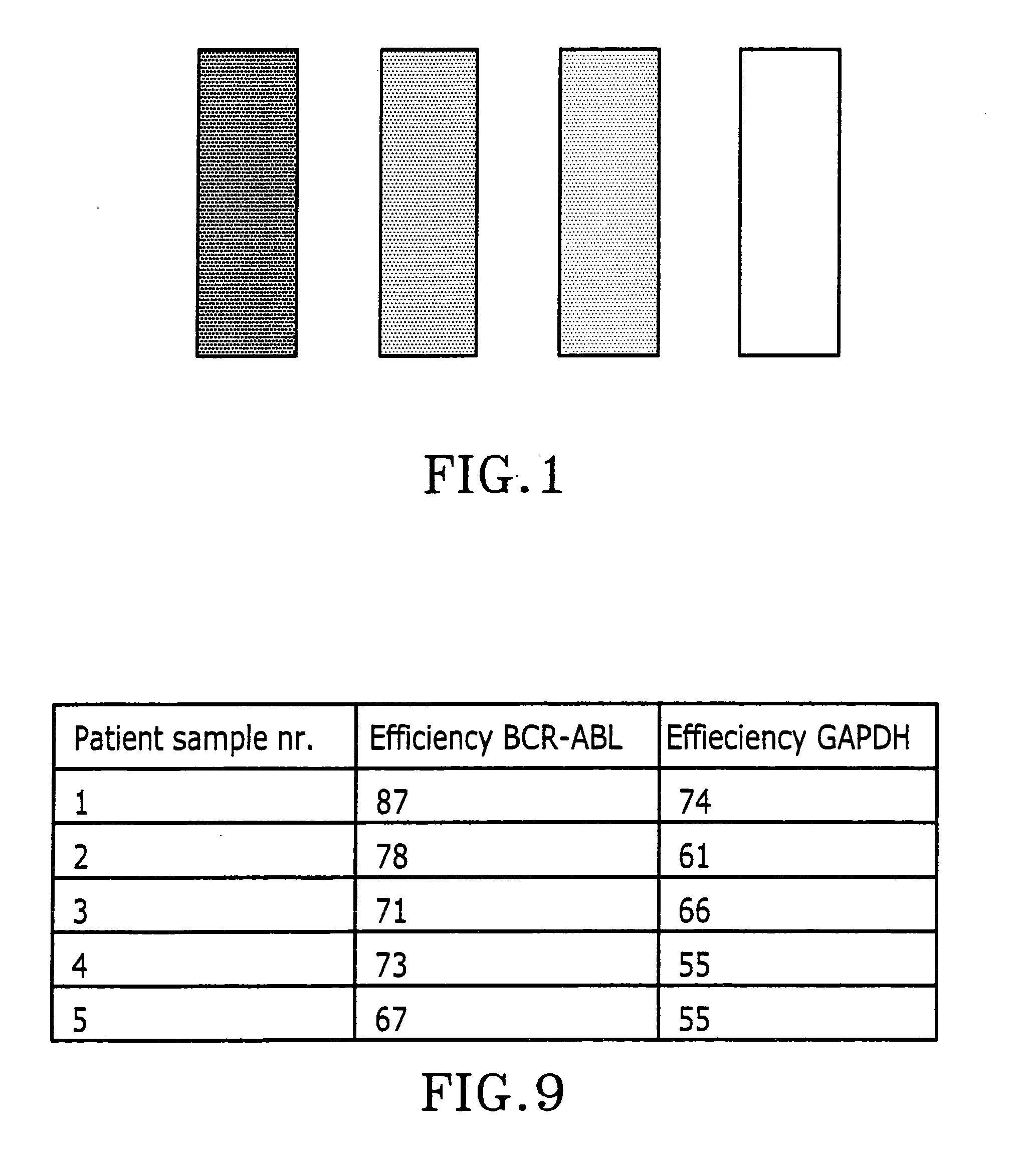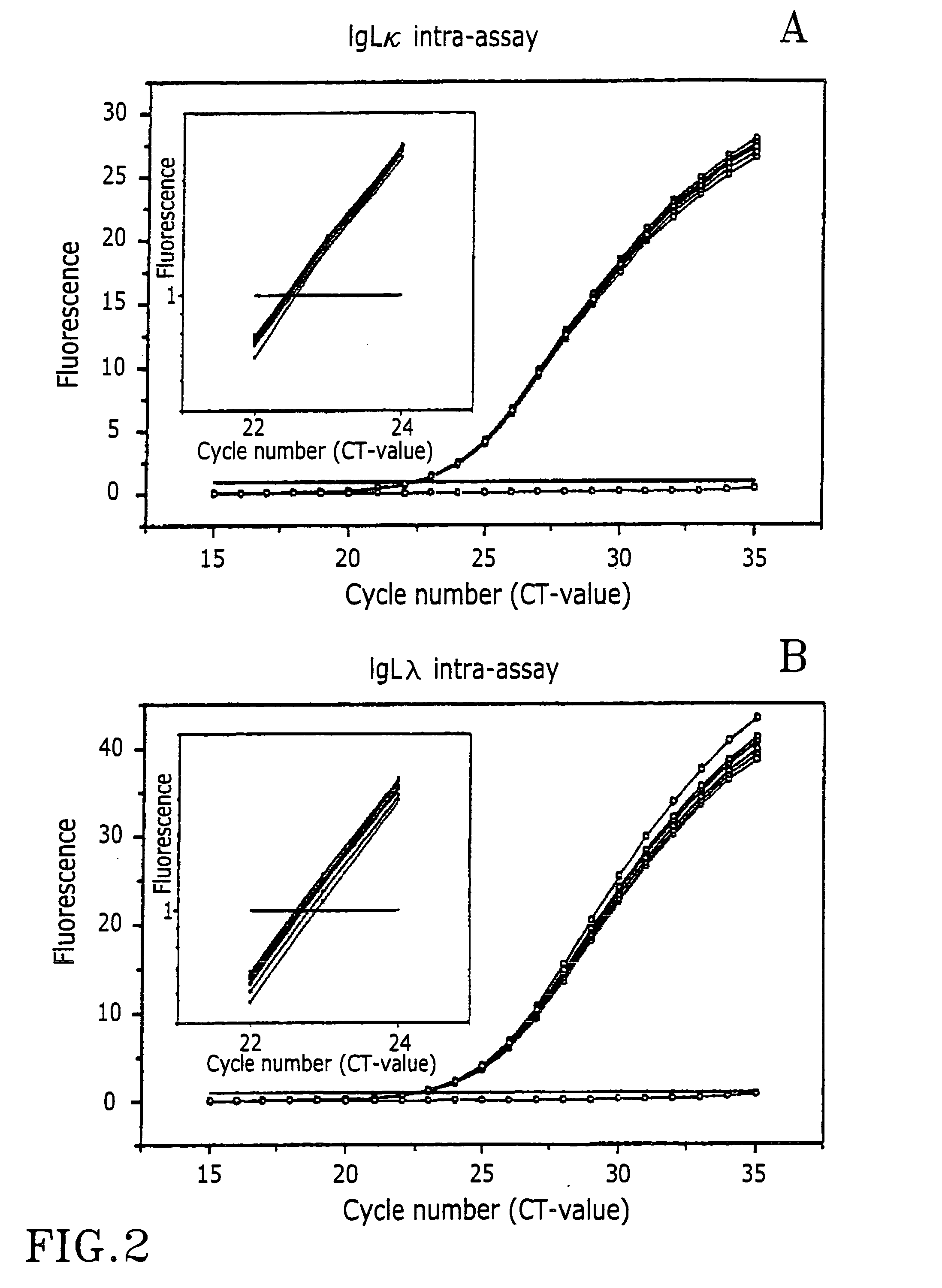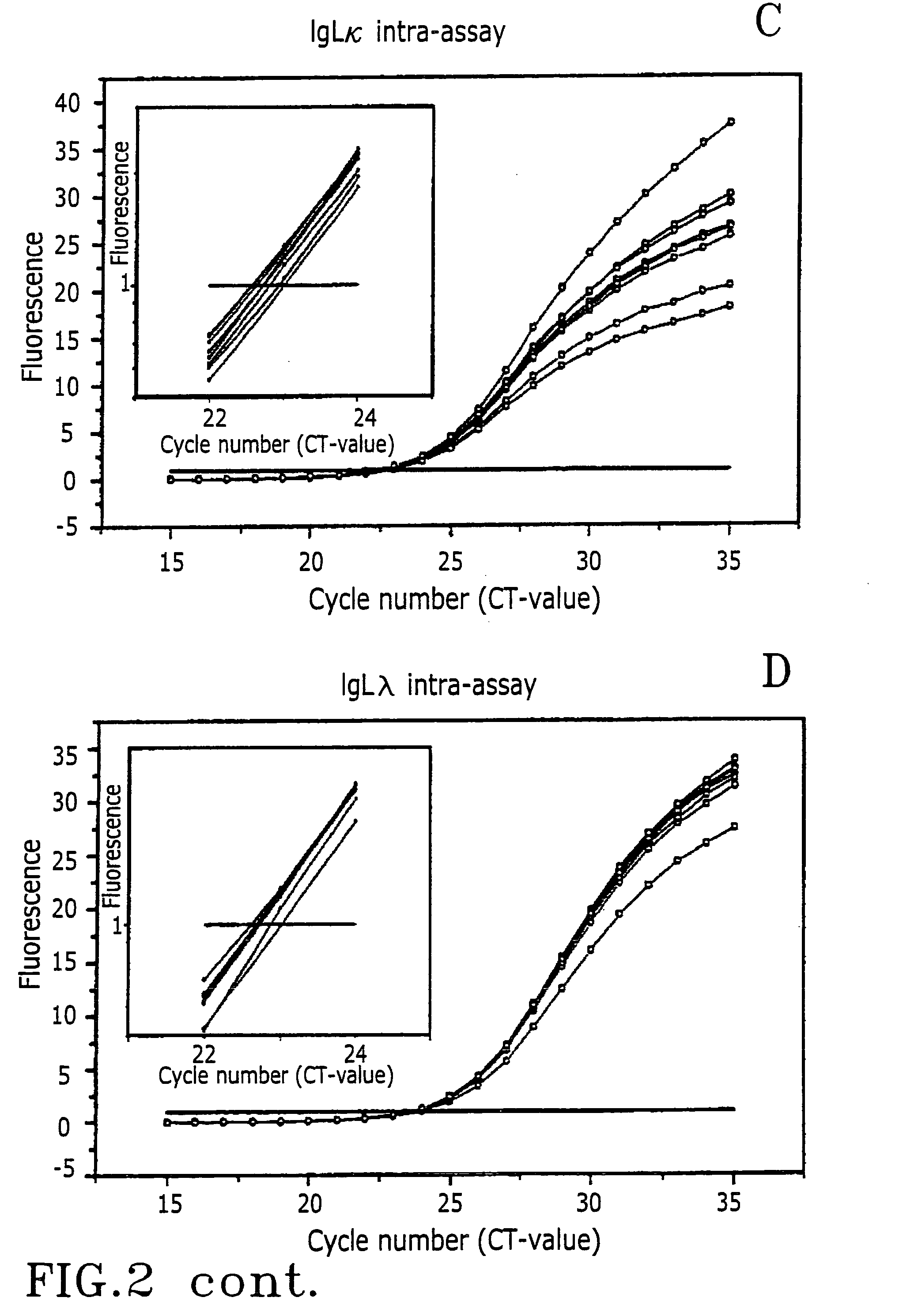Method to measure gene expression ratio of key genes
- Summary
- Abstract
- Description
- Claims
- Application Information
AI Technical Summary
Benefits of technology
Problems solved by technology
Method used
Image
Examples
example 1
Experimental Reproducibility
[0057] Surgical lymph node biopsies from previously untreated patients were transported from the operation theatre in ice water chilled boxes and handled in the laboratory within 30 minutes. Material for the study was rapidly frozen in dry ice / isopentane and stored at -70.degree. C. Parts of the tissues were fixed in formalin and used for routine diagnostic analysis. Diagnosis was reached by a combination of microscopic evaluation of histology, immunostaining of several markers including the kappa and lambda chains (IHC) and in some cases flow cytometry. The samples were classified as lymphadenitis or malignant lymphoma according to the R.E.A.L.-terminology (Harris N H, Jaffe E S, Stein H, Banks P M, Chan J K, Cleary M L, Delsol G, De Wolf-Petters C, Falini B, Gatter K C: A proposal from the International Lymphoma Study Group. Blood 1994, 84:1361-1392).
[0058] RNA was extracted using the Fast Prep System (FastRNA Green, Qbiogene). Ten .mu.g of total RNA wa...
example 2
Determination of IgL.kappa. and IgL.lambda. PCR Efficiencies in Patient Samples
[0069] PCR efficiencies in seven patient samples were determined by diluting the test samples in steps and measuring CT value at each dilution. From these data intrinsic standard curves were constructed from which the PCR efficiencies are determined (FIG. 3). We chose to dilute the samples 64 times, in three steps of 4 times. The dilutions were performed in duplicates and the CT values were measured for both the IgL.kappa. and IgL.lambda. reactions determining the efficiencies of the two assays separately. Seven patient samples, four negative and three positive, were characterized this way, as well as purified template that should not contain any inhibitors.
[0070] The PCR efficiencies obtained when amplifying purified template were E.sub.IgL.kappa.=94.7% and E.sub.IgL.lambda.=93.2% signifying that both reactions proceed with very high efficiencies as expected for optimised PCR assays. Six of the patient s...
example 3
Classification of NHL Lymphoma Patient Samples
[0075] A total of 20 patient samples were analyzed for B-cell lymphoma by the Q-PCR assay. All samples were run in duplicates including negative controls. The data plotted in FIG. 6 and summarized in FIG. 7. In the plot each symbol represents one sample and is positioned on the coordinates CT.sub.IgL.kappa., CT.sub.IgL.lambda.. The corresponding number of cDNA molecules of purified template, calculated assuming E.sub.IgL.kappa.=94.7% and E.sub.IgL.lambda.=93.2%, is indicated in logarithmic scale on the opposite axes. Samples considered negative by IHC analysis are shown as circles and positive samples are shown as squares.
[0076] Negative samples with IgL.kappa.:IgL.lambda. gene expression ratio of 60:40 are expected to lie on a straight line. Rewriting equation (9) gives (eq. 20):
N.sub.0.sub..sub.IgL.kappa.*(1+E.sub.IgL.kappa.).sup.CT.sup..sub.IgL.kappa-.=K.sub.RS*N.sub.0.sub..sub.IgL.lambda.*(1+E.sub.IgL.lambda.).sup.CT.sup..-sub.IgL.la...
PUM
| Property | Measurement | Unit |
|---|---|---|
| Force | aaaaa | aaaaa |
| Force | aaaaa | aaaaa |
| Fraction | aaaaa | aaaaa |
Abstract
Description
Claims
Application Information
 Login to View More
Login to View More - R&D
- Intellectual Property
- Life Sciences
- Materials
- Tech Scout
- Unparalleled Data Quality
- Higher Quality Content
- 60% Fewer Hallucinations
Browse by: Latest US Patents, China's latest patents, Technical Efficacy Thesaurus, Application Domain, Technology Topic, Popular Technical Reports.
© 2025 PatSnap. All rights reserved.Legal|Privacy policy|Modern Slavery Act Transparency Statement|Sitemap|About US| Contact US: help@patsnap.com



